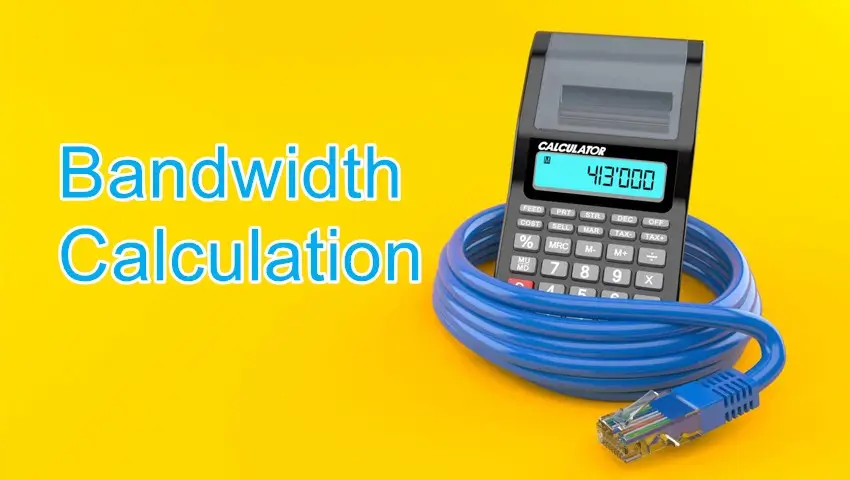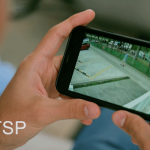Are you worried about the bandwidth needs of your IP camera system? Questions like “What are the bandwidth requirements for 720p/1080p or 4MP IP cameras? How many Mbps do I need for security cameras? How much data does a WiFi security camera use?” will be addressed in this post.
In the next few minutes, you’ll learn about IP camera bandwidth calculation and get insider tips on reducing bandwidth usage. Our guide will help you optimize your IP camera system and minimize unnecessary costs associated with data usage.
If you’re interested in calculating the storage capacity of CCTV IP cameras, we recommend reading our guide for an easy-to-use formula for optimal storage calculation.
Contents
IP Camera Bandwidth Calculation Formula & Example
Calculating the necessary Internet speed for your security camera system is essential in optimizing your system and reducing unwanted costs. While there are various online IP camera network bandwidth calculators, it’s worth knowing the simple IP camera bandwidth calculation formula and the factors that influence its usage.
In the ideal environments, four main variables determine your IP camera’s bandwidth usage, including resolution, frame rate, compression, and video length.
Top 4 Elements that Affect IP Security Camera Bandwidth/Internet Speed
- Resolution. The higher the resolution of the camera, the more bandwidth required to transmit video streaming.
- FPS (Frame Rate per Second). The higher the FPS rate, the more bandwidth usage needed.
- Video compression codec. Compression codec-wise, H.264 HD IP cameras require lower security camera internet speed requirements for video streaming due to better compression than MJPEG.
- The quantity of your IP security cameras. The number of IP cameras connected also influences the required Internet speed.
The above four variables interact with each other in determining the IP camera bitrate, subsequently affecting the required bandwidth.
IP Camera Bandwidth Calculation Formula:
Bandwidth (Mbps) = Bitrate (Main) * N + Bitrate (sub) *M
Where N and M represent the number of IP cameras for the main stream and sub-stream, respectively.
You can check the bitrates in your IP cameras’ specifications or consult with security camera company staff.
For instance, if you have one IP camera with a main stream of 6144 kbps and another with a sub-stream of 1024 kbps, the necessary IP camera bandwidth relies on:
Required Bandwidth = 1 * 6144 kbps + 1 * 1024 kbps =7168 kbps = 7.168 Mbps
| IP Camera Bandwidth Requirement | ||
| Resolution | H.264 | MJPEG |
| 1MP (1280*720) | 2 Mbps per camera | 6 Mbps per camera |
| 2MP (1920*1080) | 4 Mbps per camera | 12 Mbps per camera |
| 4MP (2560*1440) | 8 Mbps per camera | 24 Mbps per camera |
In addition to internal factors that affect IP camera bandwidth, external factors like the installation site can also impact IP camera data usage calculations.
Dig up Further for More Accurate Result of CCTV IP Camera Bandwidth Calculation
The IP camera bandwidth calculation formula provided earlier is suitable for ideal or controlled environments, and external factors ultimately affect the actual bandwidth usage. As such, depending solely on online IP camera bandwidth calculators may not provide the most accurate bandwidth calculation.
Other external factors, such as the brightness or darkness of the environment, also affect the bandwidth usage of HD IP cameras. Additionally, special applications like facial recognition or license plate recognition require higher resolution and frame rate recording, translating to higher bandwidth usage.
To obtain more accurate IP camera bandwidth calculation results, perform tests in various scenarios. Place IP cameras in different settings ranging from simple, like against a wall, to complex, like a busy entryway, and record the bandwidth requirements. By testing in different situations, you will acquire more accurate results on your IP camera bandwidth usage.
In multiple tests, it was observed that areas with a high human population have a higher bandwidth requirement. To find an IP camera that won’t use much data, consider the information above.
Tips to Reduce the IP Camera Bandwidth Usage
Concerned about high IP camera bandwidth usage? There’s good news: IP cameras only use data when you access them for live viewing or receive instant alerts due to detected motion events, which means you can reduce their data consumption with a few simple tips.
- Choose H.264 video compression codec over MJPEG to optimize compression and reduce bandwidth usage.
- Lower the frames per second (FPS) and choose the right resolution based on your needs.
- Select sub-stream types when accessing your IP cameras or recording videos.
- Set up motion detection recording to focus data usage during periods of activity, limiting unnecessary data transmission.
- Reduce the number of cameras by opting for wide-angle PTZ security cameras.
- Dual-band WiFi security cameras offer less crowded frequency bands, reducing interference and optimizing data usage.
Conclusion
Calculating the bandwidth requirements for your IP camera system is crucial for optimizing performance and minimizing costs. Factors like resolution, frame rate, compression, and the number of cameras determine the bandwidth needed.
Using the provided formula and guidelines, you can ensure that your IP camera system operates efficiently. Additionally, implementing tips like choosing the right compression codec and using motion detection can further optimize performance.

